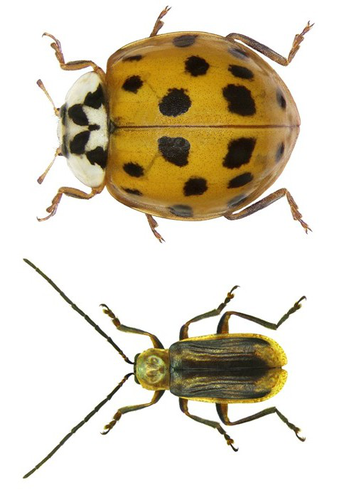
ROUGEMONT Quentin
- CEFE, CNRS, Montpellier, France
- Adaptation, Bioinformatics & Computational Biology, Evolutionary Applications, Hybridization / Introgression, Population Genetics / Genomics, Speciation
- recommender
Recommendation: 1
Reviews: 0
Recommendation: 1

Unraveling genetic load dynamics during biological invasion: insights from two invasive insect species
The genetic load of invasive population: how little do we know ?
Recommended by Quentin Rougemont based on reviews by Sylvain Glémin and 2 anonymous reviewersWe live both in a worrying and fascinating time. Worrying because human-induced global change has dramatic consequences on biodiversity around the world. Fascinating because these changes enable us to witness evolutionary processes unfolding on relatively short time scales. One such process is biological invasion. An intriguing evolutionary question is to understand which factor facilitates the success of an invasive species. In particular, serial bottlenecks at the expanding front should reduce the effective population size and decrease genetic diversity. Theoretically, this will increase the fixation of deleterious mutations due to the effect of genetic drift and overall affect the evolutionary potential of the invading species. In the short term, reduced genetic diversity and inbreeding in small populations increases the number of recessive deleterious variants exposed in a homozygous state. This may generate a reduction in mean fitness of the population. However, in the long term and under specific demographic scenarios recessive deleterious alleles may be more efficiently removed by purifying selection. Such purging may explain the success of invasion by reducing inbreeding depression and minimizing loss of fitness. Here, Lombaert et al. estimate the genetic load in two invasive insect species, a predator species, the harlequin ladybird (Harmonia axyridis) and a crop pest species, the western corn rootworm (Diabrotica virgifera virgifera).
The authors smartly took advantage of a pool-seq transcriptome-based exome capture method to estimate genetic load and assess the purge hypothesis using standard population genetic statistics, such as the ratio of nonsynonymous over synonymous expected heterozygosity, the frequency of derived alleles, and their excess or deficit.
The results revealed different patterns in the two species:
In the western corn rootworm, the authors find a clear signal of reduced genetic diversity in invasive populations. This was associated with a slightly reduced genetic load. However, there was only marginal evidence of purging regarding the most deleterious mutations, and in a single population, with moderately deleterious variants being weakly purged, as theoretically expected.
In the harlequin ladybird, in contrast, the reduction of genetic diversity in invasive populations has been small, a result related to the mild severity of the bottlenecks. In this species, the authors found a tendency toward fixation of the genetic load and no signal of purging.
Such results are intriguing, showing that different species seem to exhibit contrasted fate of genetic load. Differences in the invasion history and ecology of the species may explain these patterns. This is one of the first studies to use a population genomics approach to study the genetic load associated with biological invasion. Future studies based on whole genome data collected at the individual level across multiple species are needed to better understand the dynamics of genetic load during biological invasion and to draw more general conclusions. Advances in forward simulations may also be used to shed light on the evolution of the genetic load at different stages of the invasion process and under different strengths of bottlenecks.
References
Eric Lombaert, Aurelie Blin, Barbara Porro, Thomas Guillemaud, Julio S Bernal, Gary Chang, Natalia Kirichenko, Thomas W Sappington, Stefan Toepfer, Emeline Deleury (2025) Unraveling genetic load dynamics during biological invasion: insights from two invasive insect species. bioRxiv, ver.3 peer-reviewed and recommended by PCI Evol Biol https://doi.org/10.1101/2024.09.02.610743